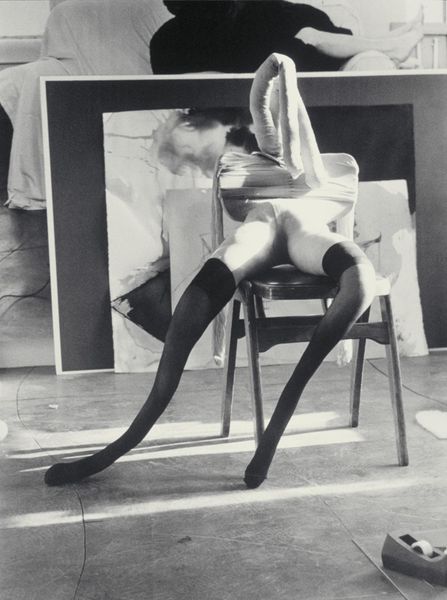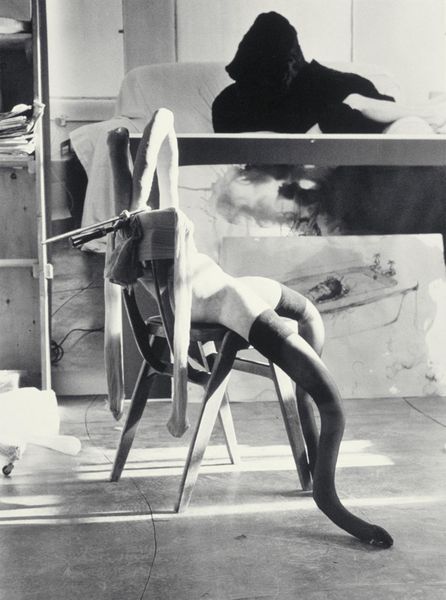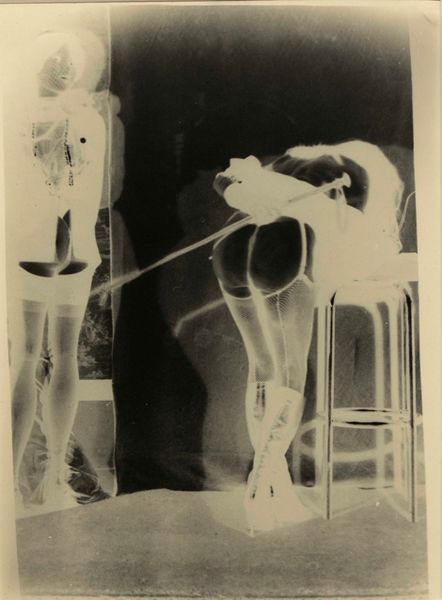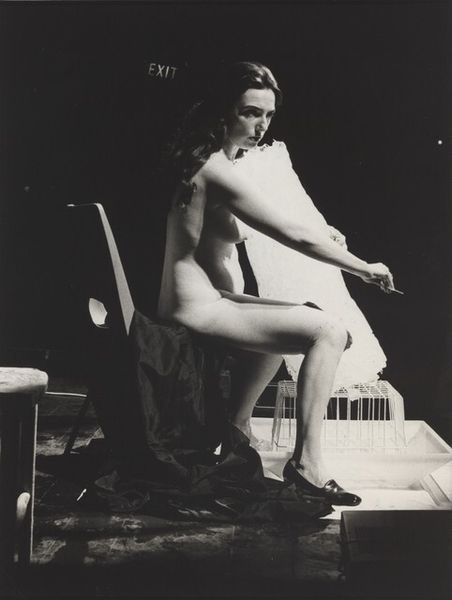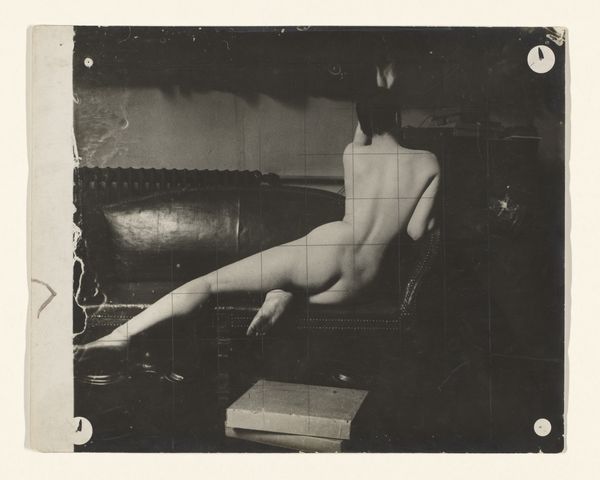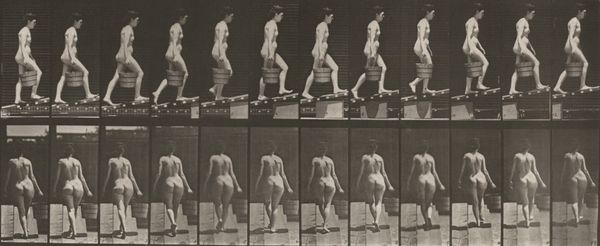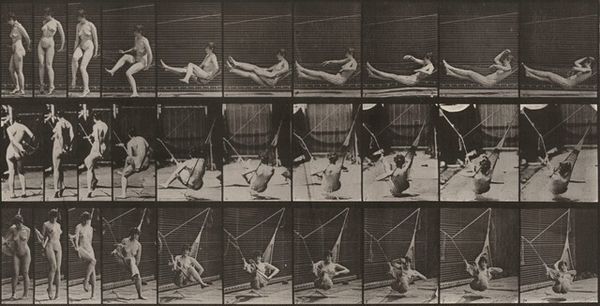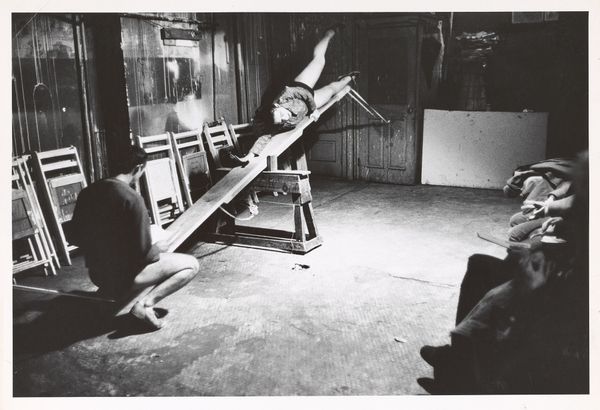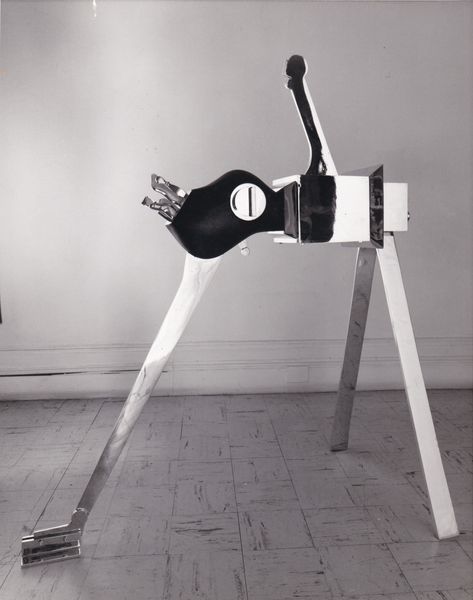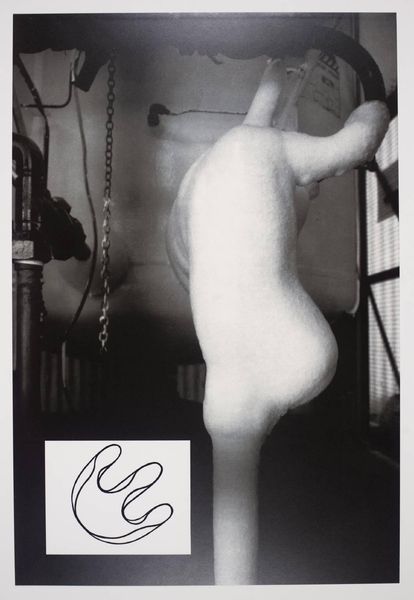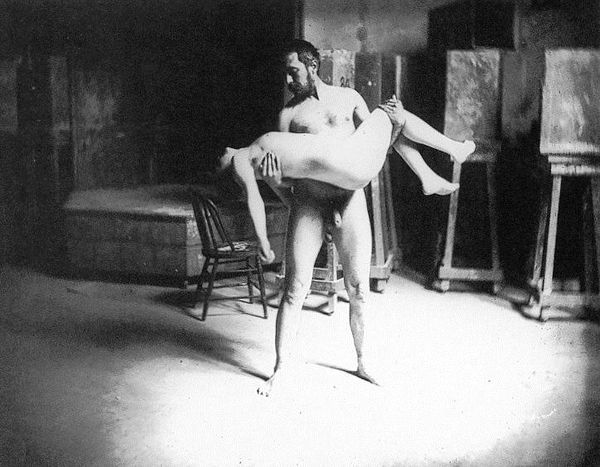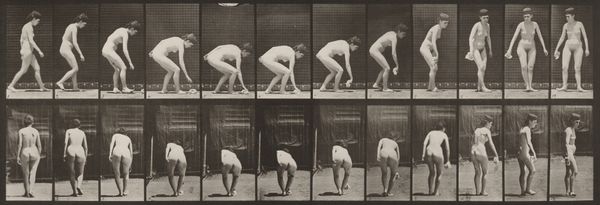
Dimensions: image: 1220 x 915 mm
Copyright: © Sarah Lucas | CC-BY-NC-ND 4.0 DEED, Photo: Tate
Curator: This is "Black and White Bunny #1" by Sarah Lucas, part of the Tate Collection, and captured in stark black and white. What’s your first impression? Editor: Unease. It's unsettling. The nylon stockings and disjointed form suggest vulnerability, yet there's also a forceful, almost confrontational presence. Curator: It's Lucas's exploration of the female form, isn't it? Crafted from tights and stuffing, everyday materials elevated, cheap, almost disposable. Editor: Exactly. It’s the readymade aesthetic pushed to its limit. The sculpture challenges notions of traditional artistry and reflects the mass production of objectification. Curator: I find it so clever, the way she uses these humble materials to evoke such powerful emotions. There's a sense of playfulness, but also a disturbing commentary on the male gaze. Editor: The starkness of the black and white emphasizes that rawness. It highlights the artifice, the constructed nature of the whole thing. The means are laid bare. Curator: Indeed, and I guess the bunny becomes a symbol then, a distorted view of femininity, crafted, consumed and then discarded. It's quite a statement. Editor: Ultimately, the work asks us to consider the labor and the materials used in constructing images and in turn, meaning. Curator: Right. It sticks with you, doesn't it? A haunting beauty made from the mundane. Editor: A potent reminder of the power held within the ordinary.
Comments
tate 6 months ago
⋮
http://www.tate.org.uk/art/artworks/lucas-black-and-white-bunny-1-p78227
Join the conversation
Join millions of artists and users on Artera today and experience the ultimate creative platform.
tate 6 months ago
⋮
Lucas exhibited these three black and white photographs as part of her installation at Sadie Coles HQ, London in 1997, entitled Bunny Gets Snookered (see Tate T07437). A series of eight 'bunny girls' made from stuffed tights, each wearing stockings the eight colours of snooker balls, sat on a variety of office chairs arranged around and on top of a snooker table in the gallery space. The photographs were hung on the adjacent wall, suggesting further possible readings of the sculptures. The installation as a whole provided a typical Lucas-style joking subversion of (male) objectification of the female body, as it appears in the tradition of surrealism, by rendering that object of desire undesirable and ridiculous. However, the photographs, with their formal beauty, hint at issues both more transcendent and more disturbing. The bunnies here (the three photographs seem to be of the same bunny) sit in the characteristic Lucas splay-legged pose, illuminated by sunlight coming in through a window which renders them beautiful rather than merely abject. Distanced from the limp and veiny physicality of the sculptures through the medium of black and white photography, the form Lucas has created by stuffing a pair of tights becomes more aesthetically attractive and subtly suggestive. The slapstick humour of the sculptures has been overlaid by a dreamy quality of light and almost-poetic atmosphere, with violation and abuse a dark undercurrent rather than an obvious theme. Lucas has increasingly combined objects and elements from her sculptures with photographic representations of herself (and sometimes parts of an anonymous male body). Here the presence of the cloaked human figure (of indeterminate gender) in the background of the picture, who reveals only a portion of leg, dislocates the viewer's imaginary connection of the sculpture with the human. By juxtaposing a real body with her sculpture which mimics a body, Lucas opens further ambiguities in the dynamics of (sexual) objectification and desire. Further reading:Lynn Barber, 'Drag Queen', Observer Magazine, London, 30 January 2000, pp.10-16Art from the UK, Sammlung Goetz, Munich 1997, pp.130-6Sarah Lucas, exhibition catalogue, Museum Boymans-van Beuningen, Rotterdam 1996 Elizabeth ManchesterAugust 2000
